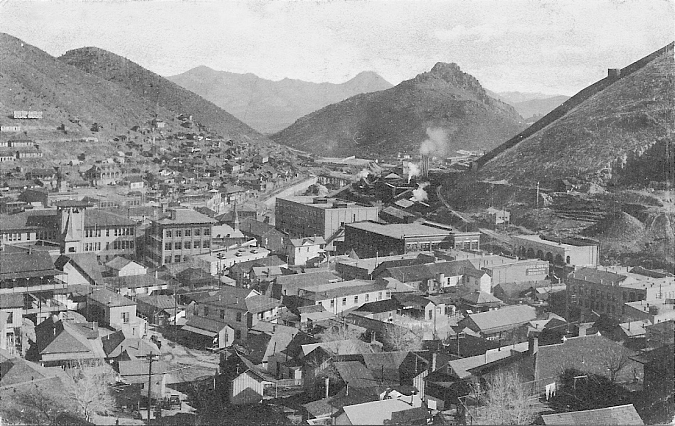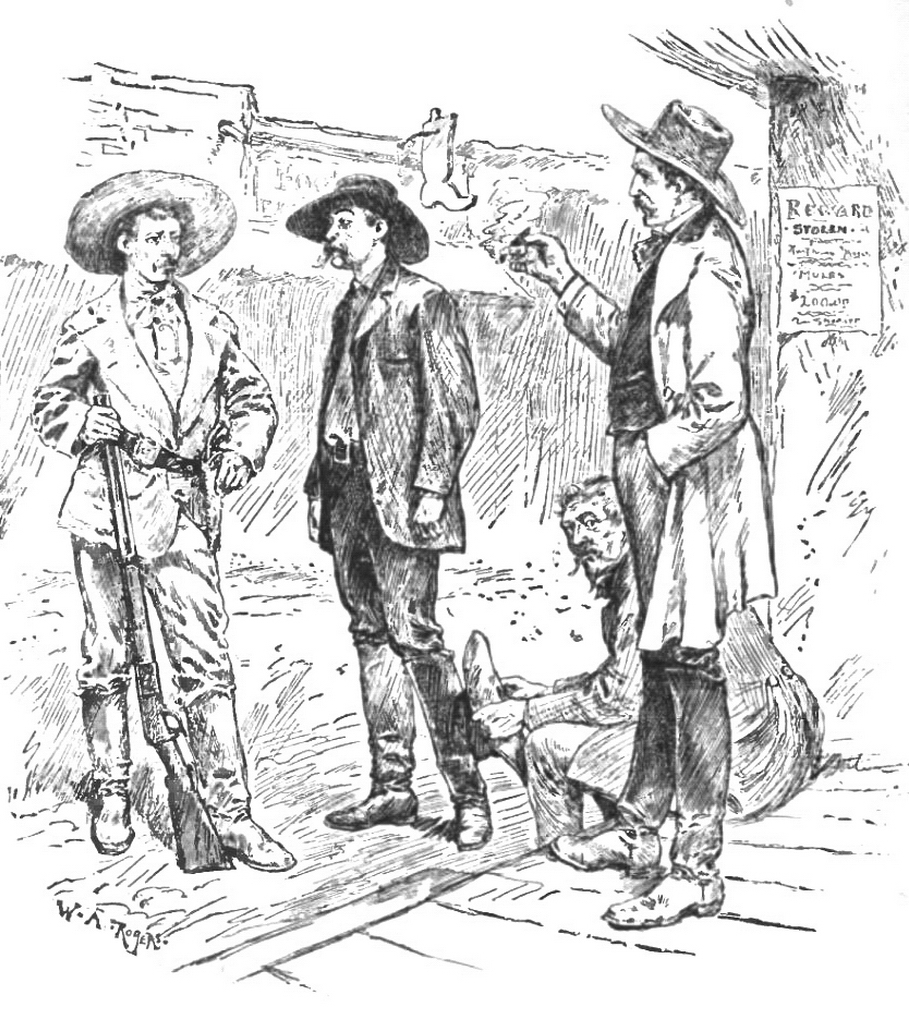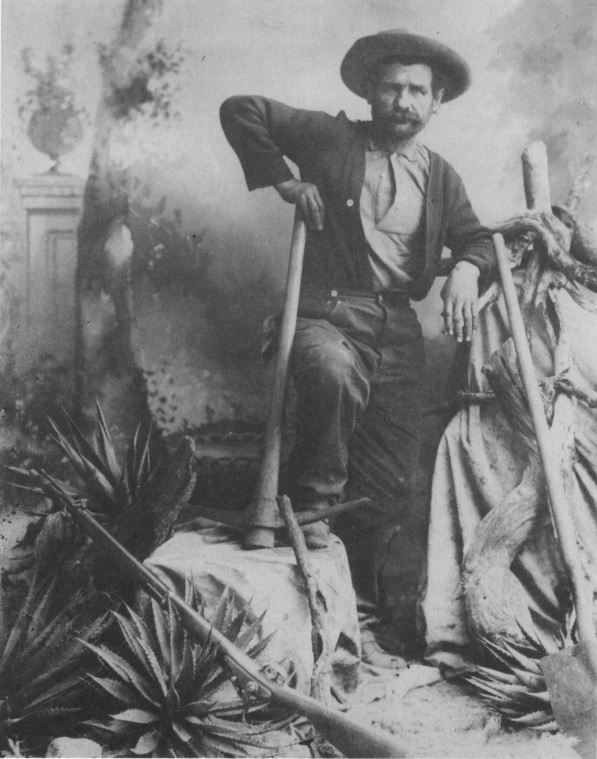|
Bisbee, Arizona
Bisbee is a city in and the county seat of Cochise County, Arizona, Cochise County in southeastern Arizona, United States. It is southeast of Tucson, Arizona, Tucson and north of the Mexican border. According to the 2020 United States census, 2020 census, the population of the town was 4,923, down from 5,575 in the 2010 census. History Bisbee was founded as a copper, gold, and silver mining town in 1880, and named in honor of Judge DeWitt Bisbee, one of the financial backers of the adjacent Copper Queen Mine. The town was the site of the Bisbee Riot in 1919. In 1929, the county seat was moved from Tombstone, Arizona, Tombstone to Bisbee, where it remains. Mining industry Mining in the Mule Mountains proved quite successful: in the early 20th century the population of Bisbee soared. Incorporated in 1902, by 1910 its population had swelled to 9,019, the third largest in the territory, and it sported a constellation of suburbs, including Warren, Lowell, Arizona, Lowell, and ... [...More Info...] [...Related Items...] OR: [Wikipedia] [Google] [Baidu] |
City
A city is a human settlement of a substantial size. The term "city" has different meanings around the world and in some places the settlement can be very small. Even where the term is limited to larger settlements, there is no universally agreed definition of the lower boundary for their size. In a narrower sense, a city can be defined as a permanent and Urban density, densely populated place with administratively defined boundaries whose members work primarily on non-agricultural tasks. Cities generally have extensive systems for housing, transportation, sanitation, Public utilities, utilities, land use, Manufacturing, production of goods, and communication. Their density facilitates interaction between people, government organisations, government organizations, and businesses, sometimes benefiting different parties in the process, such as improving the efficiency of goods and service distribution. Historically, city dwellers have been a small proportion of humanity overall, bu ... [...More Info...] [...Related Items...] OR: [Wikipedia] [Google] [Baidu] |
Tucson, Arizona
Tucson (; ; ) is a city in Pima County, Arizona, United States, and its county seat. It is the second-most populous city in Arizona, behind Phoenix, Arizona, Phoenix, with a population of 542,630 in the 2020 United States census. The Tucson metropolitan statistical area had 1.043 million residents in 2020 and forms part of the Tucson-Nogales combined statistical area. Tucson and Phoenix anchor the Arizona Sun Corridor. The city is southeast of Phoenix and north of the United States–Mexico border It is home to the University of Arizona. Major incorporated suburbs of Tucson include Oro Valley, Arizona, Oro Valley and Marana, Arizona, Marana northwest of the city, Sahuarita, Arizona, Sahuarita south of the city, and South Tucson, Arizona, South Tucson in an enclave south of downtown. Communities in the vicinity of Tucson (some within or overlapping the city limits) include Casas Adobes, Arizona, Casas Adobes, Catalina Foothills, Arizona, Catalina Foothills, Flowing Wells, A ... [...More Info...] [...Related Items...] OR: [Wikipedia] [Google] [Baidu] |
Lowell, Arizona
Lowell is a populated place situated in Cochise County, Arizona, United States. It was incorporated into Bisbee in the early 1900s. Originally a residential town, it was later settled by many miners from countries such as Finland, Serbia and Montenegro , image_flag = Flag of Montenegro.svg , image_coat = Coat of arms of Montenegro.svg , coa_size = 80 , national_motto = , national_anthem = () , image_map = Europe-Mont ... working in the Lavender Pit mine located there. References External links Lowell– ghosttowns.com {{authority control Populated places in Cochise County, Arizona Ghost towns in Arizona ... [...More Info...] [...Related Items...] OR: [Wikipedia] [Google] [Baidu] |
Mule Mountains
The Mule Mountains are a north/south running mountain range located in the south-central area of Cochise County, Arizona. The highest peak, Mount Ballard, rises to . Prior to mining operations commencing there, the mountains were heavily forested with large Rocky Mountain Douglas-fir (''Pseudotsuga menziesii glauca'') and other conifers, but these were all cut down for housing needs and to feed the ore smelting furnaces in Douglas, Arizona, approximately 20 miles due east. Now, the primary vegetation of the Mules consists of manzanita (''Arctostaphylos'' spp.) brush, juniper, lowland oaks and pines, and various grasses. To the east of the mountain range lies Sulphur Springs Valley, and the San Pedro River and Valley to the west. The terrain is very rough, with very steep slopes descending into deep canyons. Common wildlife species include desert mule deer (''Odocoileus hemionus eremicus''), Coues' White-tailed deer (''O. virginianus couesi''), Collared Peccary ... [...More Info...] [...Related Items...] OR: [Wikipedia] [Google] [Baidu] |
Mining
Mining is the Resource extraction, extraction of valuable geological materials and minerals from the surface of the Earth. Mining is required to obtain most materials that cannot be grown through agriculture, agricultural processes, or feasibly created Chemical synthesis, artificially in a laboratory or factory. Ores recovered by mining include Metal#Extraction, metals, coal, oil shale, gemstones, limestone, chalk mining, chalk, dimension stone, rock salt, potash, gravel, and clay. The ore must be a rock or mineral that contains valuable constituent, can be extracted or mined and sold for profit. Mining in a wider sense includes extraction of any non-renewable resource such as petroleum, natural gas, or even fossil water, water. Modern mining processes involve prospecting for ore bodies, analysis of the profit potential of a proposed mine, extraction of the desired materials, and final mine reclamation, reclamation or restoration of the land after the mine is closed. Mining ma ... [...More Info...] [...Related Items...] OR: [Wikipedia] [Google] [Baidu] |
Tombstone, Arizona
Tombstone is a city in Cochise County, Arizona, Cochise County, Arizona, United States, founded in 1879 by Prospecting, prospector Ed Schieffelin in what was then Pima County, Arizona, Pima County, Arizona Territory. It became one of the last boomtowns in the American frontier. The town grew significantly into the mid-1880s as the local Silver mining, mines produced $40 to $85 million in silver bullion, the largest productive silver district in Arizona. Its population grew from 100 to around 14,000 in less than seven years. It is best known as the site of the Gunfight at the O.K. Corral and draws most of its revenue from tourism. The city had a permanent population of 1,308, according to the 2020 United States census, 2020 census. History The town was established on Goose Flats, a mesa above the Goodenough Mine. Within two years of its founding, although far distant from any other metropolitan area, Tombstone had a bowling alley, four churches, an Ice house (building), ice hous ... [...More Info...] [...Related Items...] OR: [Wikipedia] [Google] [Baidu] |
Bisbee Riot
The Bisbee Riot, or the Battle of Brewery Gulch, occurred on July 3, 1919, between the black Buffalo Soldiers of the 10th Cavalry and members of local police forces in Bisbee, Arizona. Following a confrontation between a military policeman and some of the Buffalo Soldiers, the situation escalated into a street battle in Bisbee's historic Brewery Gulch. At least eight people were seriously injured, and fifty soldiers were arrested. This incident was unusual for being between police and military. Most other riots during the Red Summer of 1919 involved wide-scale white rioting against blacks, both sides civilians. Background In 1919, Bisbee had a population 20,000 and was home to white, black, Hispanic, Asian, and Native Americans. It was described by author Cameron McWhirter as a "remote... dusty frontier town," ten miles north of the Mexican border. The economy hinged on the extraction of copper ore from local mines. Because the demand for copper declined following the end ... [...More Info...] [...Related Items...] OR: [Wikipedia] [Google] [Baidu] |
Copper Queen Mine
The Copper Queen Mine was a copper mine in Cochise County, Arizona, United States. Its development led to the growth of the surrounding town of Bisbee in the 1880s. Its orebody ran 23% copper, an extraordinarily high grade. It was acquired by Phelps Dodge in 1885. In the early 1900s, this was the most productive copper mine in Arizona.Horace J. Stevens (1909), ''The Copper Handbook'', v.8, Houghton, Mich.: Horace Stevens, p. 1457. While copper mining declined in the area in the 1930s and 1940s, the Copper Queen continued to be mined by the open-pit process during the years following World War II. With decreasing returns, Phelps Dodge closed it in 1985. History The presence of copper ore in the Mule Mountains of southeast Arizona may have been known as early as 1876, but the first mining claim was filed on August 2, 1877. In 1877, a U.S. Cavalry patrol from Fort Bowie was tracking Apache Indians and camped at what was later called Iron Springs. The men didn't like the qual ... [...More Info...] [...Related Items...] OR: [Wikipedia] [Google] [Baidu] |
Mining Town
A mining community, also known as a mining town or a mining camp, is a community that houses miners. Mining communities are usually created around a mine or a quarry. Historical mining communities Australia * Ballarat, Victoria * Bendigo, Victoria * Kalgoorlie, Western Australia * Menzies, Western Australia Austria-Hungary Austrian Lands * Idrija, today in Slovenia * Eisenerz in Styria * Hall in Tirol in Tyrol * Schwaz in Tyrol Lower Hungarian mining towns *Kremnitz, today Kremnica in Slovakia *Schemnitz, today Banská Štiavnica in Slovakia *Neusohl, today Banská Bystrica in Slovakia *Königsberg, today Nová Baňa in Slovakia *Libethen, today Ľubietová in Slovakia *Pukkanz, today Pukanec in Slovakia *Dilln, today Banská Belá in Slovakia Upper Hungarian mining towns *Göllnitz, today Gelnica in Slovakia *Rosenau, today Rožňava in Slovakia *Zipser Neudorf, today Spišská Nová Ves in Slovakia *Schmöllnitz, today Smolník in Slovakia *Jossau, today ... [...More Info...] [...Related Items...] OR: [Wikipedia] [Google] [Baidu] |
Silver
Silver is a chemical element; it has Symbol (chemistry), symbol Ag () and atomic number 47. A soft, whitish-gray, lustrous transition metal, it exhibits the highest electrical conductivity, thermal conductivity, and reflectivity of any metal. Silver is found in the Earth's crust in the pure, free elemental form ("native metal, native silver"), as an alloy with gold and other metals, and in minerals such as argentite and chlorargyrite. Most silver is produced as a byproduct of copper, gold, lead, and zinc Refining (metallurgy), refining. Silver has long been valued as a precious metal. Silver metal is used in many bullion coins, sometimes bimetallism, alongside gold: while it is more abundant than gold, it is much less abundant as a native metal. Its purity is typically measured on a per-mille basis; a 94%-pure alloy is described as "0.940 fine". As one of the seven metals of antiquity, silver has had an enduring role in most human cultures. Other than in currency and as an in ... [...More Info...] [...Related Items...] OR: [Wikipedia] [Google] [Baidu] |
Gold
Gold is a chemical element; it has chemical symbol Au (from Latin ) and atomic number 79. In its pure form, it is a brightness, bright, slightly orange-yellow, dense, soft, malleable, and ductile metal. Chemically, gold is a transition metal, a group 11 element, and one of the noble metals. It is one of the least reactivity (chemistry), reactive chemical elements, being the second-lowest in the reactivity series. It is solid under standard temperature and pressure, standard conditions. Gold often occurs in free elemental (native state (metallurgy), native state), as gold nugget, nuggets or grains, in rock (geology), rocks, vein (geology), veins, and alluvial deposits. It occurs in a solid solution series with the native element silver (as in electrum), naturally alloyed with other metals like copper and palladium, and mineral inclusions such as within pyrite. Less commonly, it occurs in minerals as gold compounds, often with tellurium (gold tellurides). Gold is resistant to ... [...More Info...] [...Related Items...] OR: [Wikipedia] [Google] [Baidu] |
Copper
Copper is a chemical element; it has symbol Cu (from Latin ) and atomic number 29. It is a soft, malleable, and ductile metal with very high thermal and electrical conductivity. A freshly exposed surface of pure copper has a pinkish-orange color. Copper is used as a conductor of heat and electricity, as a building material, and as a constituent of various metal alloys, such as sterling silver used in jewelry, cupronickel used to make marine hardware and coins, and constantan used in strain gauges and thermocouples for temperature measurement. Copper is one of the few metals that can occur in nature in a directly usable, unalloyed metallic form. This means that copper is a native metal. This led to very early human use in several regions, from . Thousands of years later, it was the first metal to be smelted from sulfide ores, ; the first metal to be cast into a shape in a mold, ; and the first metal to be purposely alloyed with another metal, tin, to create bronze, ... [...More Info...] [...Related Items...] OR: [Wikipedia] [Google] [Baidu] |








